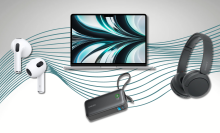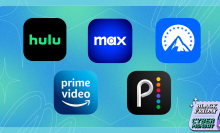Welcome to Dial Up, Mashable’s most excellent look at technology in the '90s, from the early days of the World Wide Web to the clunky gadgets that won our hearts.
In 2019, if you want to meet with someone, you shoot them a text. Easy. That wasn't the case in the 1990s.
Back then, the scenario looked a little more like this: You carried around a little device called a pager in your pocket. It went off, showing little more than a phone number on the diminutive screen. If you were in public, you found a pay phone to call that number and arrange a meetup. At that point, you just had to hope everything went right, or go through that process all over again.
Things are much better now.
Black Friday deals you can shop right now
-
Apple AirPods Pro 2 ANC Earbuds With USB-C Charging Case — $153.99 (List Price $249.00)
-
Apple iPad 10.9" 64GB Wi-Fi Retina Tablet (2022 Release) — $249.99 (List Price $349.00)
-
Meta Quest 3S 128GB VR Headset + $75 Digital Credit — $299 With Code "QUEST75"
-
Blink Outdoor 4 1080p Security Camera (3-Pack) — $99.99 (List Price $259.99)
-
Bose QuietComfort Wireless Noise Cancelling Headphones — $199.00 (List Price $349.00)
-
Apple Watch Series 10 (GPS, 42mm, Black, S/M, Sports Band) — $329.00 (List Price $399.00)
-
Samsung Odyssey G93SC 49" Dual QHD OLED Curved Monitor — $949.99 (List Price $1599.99)
But while pagers may seem ridiculous now, in the '90s, they were everywhere. While the technology dates back to the late 1940s, pagers hit their peak in the Clinton years. By 1994, there were 61 million pagers in use around the world, and schools felt the need to ban them because they had a reputation as a preferred tool of drug dealers.
By 1994, there were 61 million pagers in use around the world
We want to help those on the younger side understand why pagers were cool. As someone who is old enough to remember pagers, but young enough to have never used one, I think I can help bridge this generational gap.
Let's take a trip back to the '90s ....
Wait, what is a pager?
Pagers are little devices that receive transmissions. Most would beep (hence the term "beepers") or vibrate to let you know someone wanted your attention. Pagers are actually still used today, but we'll get to that in a little bit.
Early pagers didn't even have a screen. They would just make a sound or vibrate and you were supposed to know what that meant. Then came numeric and alphanumeric pagers. The former can display strings of numbers on their screens, while the latter can display numbers and letters. So futuristic! On top of that, some pagers were two-way, which meant they could both send and receive messages.
In an era so bygone it might as well be prehistory, people would give out their individual pager numbers to those who needed them, be it parents or friends. A sender could call that number and type in a numeric code on their phone or give a message to an operator. Either way, it would then be transmitted to the pager.

In the case of numeric pagers, people came up with codes to communicate basic messages. A 1997 Los Angeles Times piece reveals that teens were using "90*401773" as shorthand for "go home." It's supposed to be an approximation of the phrase using only letters, which you can sort of see if you squint, I guess.
Of course, "420" meant then what it means today.
There were, and still are, real benefits to pagers
It sounds silly and inelegant now that we all carry around internet-connected phones in our pockets, but pagers made a ton of sense in their day. Cell phones were expensive and much more limited in what they could do. Pagers, by comparison, were cheap and gave users an easy way to convey information to someone, even if it didn't guarantee an immediate response.
For example, a cell phone in the mid-'90s could easily cost north of $500, actually coming close to what they cost now. When you factor in inflation and consider that these phones were good for calling and little else, the value plummets. A pager, meanwhile, ran you about $60 or less and the monthly fee was negligible.
Also, pagers were, and still are, very reliable. They don't use the same mobile networks as cell phones, so if there's some kind of massive emergency that disables cell networks, pagers can still work. The devices have a longer battery life than phones, too, since they're asked to do so little by comparison.

Thanks to these benefits, a decades-old communication tool still has plenty of users today. According to a 2017 The Guardian piece, pagers are primarily used by medical professionals and emergency responders. They might be antiquated, but pagers can save lives.
Amusingly, one of the other major uses for pagers nowadays is birdwatching. When a rare bird has been sighted, what better way to let birders know about it? The messages are instantaneous and might be a little more reliable for a birder who is out in nature. No reason to fix what isn't broken.
You've probably used a pager even if you don't think you have. If you recall the very basic pagers we covered earlier, those are still used in restaurants to let customers know a table is open. The more you know.






























